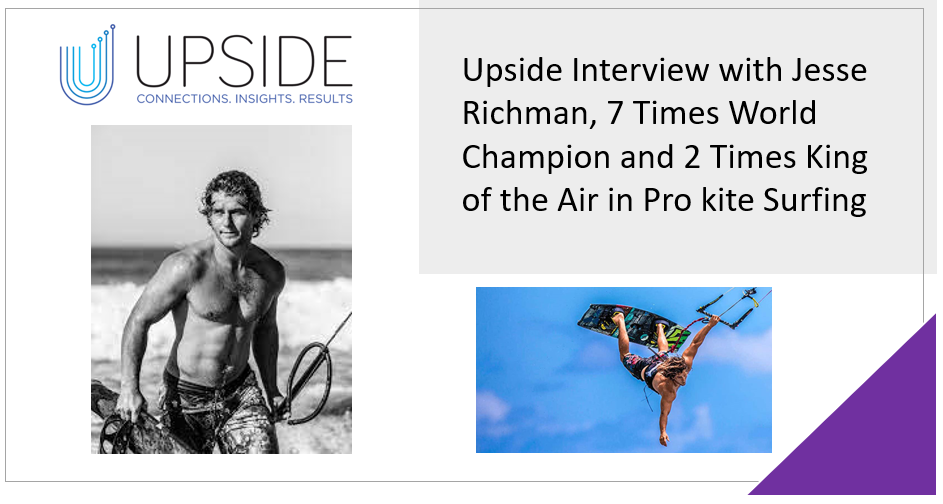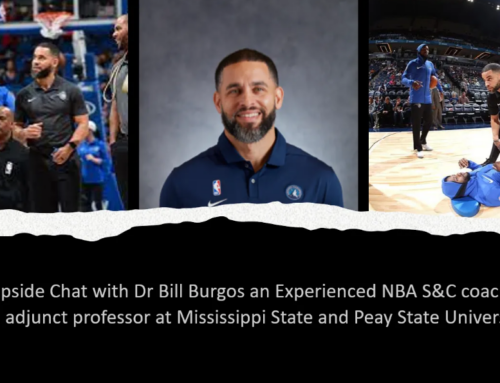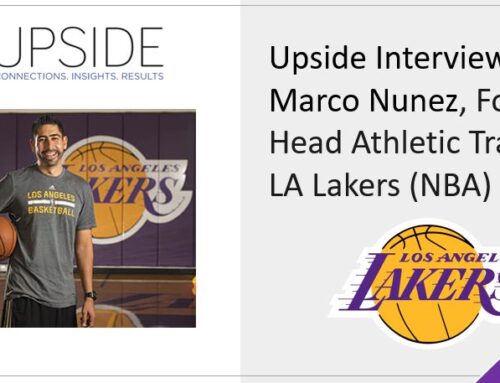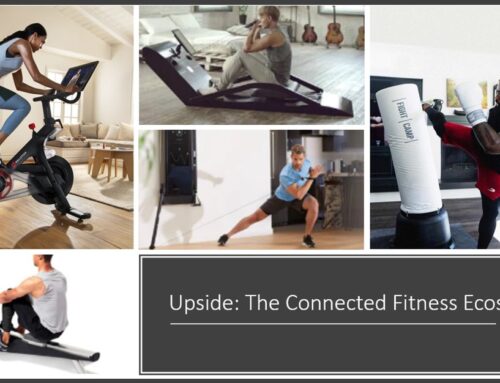This week we had the honor to interview Jesse Richman, a 7 times world champion and 2 times king of the air in pro kite surfing. Jesse lives in Maui, Hawaii.
Here is a video on Jesse Richman when he won King of Air 2020.
Video: Jesse Richman.
?Show Notes: Through this interview, we touched on how he got started in the world of pro kite surfing, his first world title, the importance of technologies, the types of technologies he uses and would like to build. We also discussed the Metaverse and NFT space.
?Best Quotes: Here’s some of the key discussion points and best quotes from our conversation with Jesse:
- On how he got into kite surfing: “So to dive right in, my name’s Jesse Richman. I’m 29 years old and I grew up here on Maui in Hawaii. I got into kite surfing at a pretty young age. I shifted from a normal upbringing to a traveling, adventure, kite surfing life pretty early. I went on the world tour and won my first world title at 15”.
- On the early day of pro kite surfing: “It’s a special time at the beginning of anything. In 1999, there might have been 100-200 kiters worldwide. And in 2000, there was 60,000 kiters worldwide and it just kept on exploding. So to be involved in the sport in the early years where there’s just so much energy and a rapid progression, it was really exciting. And the gear back then was so barbaric compared to what we have today, which really was a blessing because it made you, as a rider, have to learn about the wind and the water and the elements. On the other end, now there’s so many safety features built into these kites. There’s the ability to basically kill all of the power. So you can be riding and you can stop (..) Once I started getting into freestyle and big air and wave riding and all of the competitive disciplines, it was just led by whatever excited me the most. And I was fortunate to win the world tour the first year that I really spent my entire year traveling on it”.
- On his biggest height: “Well, recorded, we’ve had a number of different motion tracking device companies get into kiting because there are some pretty specific requirement and technological needs that you need to track a kit boarding jump. And the highest recorded jump I ever had, I think was 24 meters (..) People have gone much higher. I think now the record is currently at 33. (..) When I was really involved with one of the companies, there were so many times where everything malfunctioned and that had honestly put me off using the height tracking devices, because it would be so discouraging to come in from a session where you feel like you just broke the world record, and you look at your device and it clearly malfunctioned”.
- On the importance of technologies in pro kite surfing: “Like with any of these sports, there are so many applications for technology to come in and improve what we’re doing. There’s anything from the human performance standpoint, there’s the motion capturing standpoint with action cameras, there’s the research and development of the equipment standpoint, where you can catalog all these different models of equipment with different sensors, and start to compare things digitally instead of just going by feel. I would say that I have mixed feelings across the board with all of those technologies. Because at one point we are just out in the elements where it’s kind of a dance between yourself and mother nature. And a lot of times different pieces of tech just kind of get in the way of that connection. And then other times, these are incredibly useful tools that help you feel better and succeed, and then take this passion that we have and showcase it with the world. So it’s pretty cool to see all the different applications that you can use with tech and being involved with a sport like kite boarding”.
- On his favorite technologies: “I use the basic heart rate monitor for training. And one of my favorite ways to train is to do zone training by maintaining an elevated heart rate and keeping it in different zones. I find that to be a very simple, and yet super fun and a beneficial workout. I also spent almost a year wearing a Whoop. And that was super cool (..) For training, I find it super beneficial. Obviously, it’s great to be able to spend six months where we have different blocks. And I have an incredible personal trainer here that’s super into analyzing all of this information and seeing what works for me, because obviously, all of these training programs are so person specific and sport specific. So it is fun to have one of these more advanced companies in an extreme sport, like kite boarding, which generally doesn’t have the same sort of training programs that you could say that the NFL or NBA would have”.
- On his frustration with technologies sometimes: “I do like all of the information that I get, but I get a little bit frustrated when the results or the readings that I’m getting aren’t what I want to see. To me, especially with competition, there’s so many times when I might not be in the perfect physical state. There might be different things that have impacted where I’m at. But if I’m pushed up against a wall and there’s a huge swell and there are big waves and we need to go out there. That’s like, it’s the day, but it doesn’t matter what my watch says, if it’s the day. I have to go. And so then it’s almost discouraging looking at readings that are not paired with that day. So that frustrated me, because I feel like there is a sense of mind over matter where if I am determined to do something, and it doesn’t matter what my readings say, I can make it happen and it’ll end up being the best day ever. So I’d say, for competitions, or for the really big days, I don’t like having that information”.
- On the type of technology he would build if he had unlimited resources: “I would say there’s one direction that I won’t go too far into, but I’ve really been excited about trying to digitize R&D on kite boarding, and basically create a system where you would have every single kite, it’s characteristics, every single board and every single piece of information on them, and be able to compare them and fly them digitally. And then every time you made a new iteration of a kite, you would have every single other kite out there to compare it to. Where, right now, a lot of research and development in kit boarding is just done by feel. And there are different companies, the company I work for included, North Kite Boarding, that uses technology, but still, we don’t have a huge digital library of every kite ever created. An then you could even take it one step further, and say from a consumers standpoint, to be able to walk in and say, I currently fly this kite and I want to buy something new. And to be able to compare that and actually see the difference between the two kites and see where it would help. So that, to me, has been something that I’ve been more curious as I mature in my career and move more into the designing phase of creating this equipment”.
- On the type of NFT/Metaverse experience he would love to build: “Just with my production team here in Hawaii, we’ve been working on trying to land, not one, but a number of tricks and waves. And have it be like the first ever landed maneuver. I’m not going to tell you what the exact tricks are. But we’re working on that, because I feel like having that on video, and then having an NFT of that would be pretty special. I don’t necessarily know where to go with that, or how to bring that vision to life. (..) NFTs continues to do what I feel like social media has done for extreme sports athletes. Where, when I got into kite boarding, the key was to get magazine coverage. And now, basically, your worth is heavily based and pulled from your social media. And that’s something that then you would go to sponsors and sell. But if you cut out that process, and you just go straight from content to consumer, that would be a pretty crazy concept”.
You may also like:
? Upside Chat: Marco Nunez, Former Head Athletic Trainer (LA Lakers/NBA)
? Upside Chat: Sean Harrington, Notemeal CEO (Online platform for nutritionists and dietitians)
⭐Sports Performance Roles & Best Practices (Head of Performance, Head Athletic Trainer..)
?Upside Chat: Alexi Pianosi, Strengths and Conditioning Coach, Pittsburgh Penguins (NHL)
?Upside Chat: Pierre Barrieu, High Performance Director, Toronto FC (MLS)
?Upside Chat: Len Zaichkowsky, World-Class’ Sports Biofeedback Expert
⭐ Upside Startup Spotlight: Neurocess (Leading injury prevention startup)
⌚ ? Upside Analysis: Sports Leagues’ regulation towards wearables
You can check out our Upside Global platform here to start accelerating your business.












Leave A Comment
You must be logged in to post a comment.